African American and HIV/AIDS Survey – News Release
Despite Widespread Concern About AIDS, Few African Americans See ‘A Lot’ of Action From Community Groups and Government in Fight Against Disease
African Americans Want Practical Help on HIV/AIDS:How to Talk with Children and Partners, More Information About Testing and Treatment
Media Named As Most Important Resource on HIV/AIDS
Embargoed for release until: 9:00 am, ET, Tuesday, March 17, 1998
Boston, MA — As African Americans make up a growing percent of new AIDS cases in the United States — 43 percent in 1996 — a new national survey by the Kaiser Family Foundation finds many African Americans today extremely concerned about the AIDS crisis:
- One in two African Americans (50%) say they are very concerned about becoming infected by HIV, a level of worry that is twice that among a national sample of all Americans (24%); and, 40 percent of African Americans say their personal concern has heightened from just a few years ago;
- Most African Americans (56%) say AIDS is a very serious problem for the people they know, and in fact one in two (49%) knows someone who has HIV or AIDS or has died from AIDS. By comparison, only a third of a national sample of all Americans say they are or have been as personally impacted by the disease;
- According to a majority of African Americans (52%), the AIDS crisis is the leading health problem facing the nation today, one which three in five (58%) say has become more urgent in recent years;
- More than two in five African Americans — 44 percent — say the situation has also worsened in their local communities.
The Kaiser Family Foundation Survey of African Americans on HIV/AIDS is being presented today at a special conference organized by the W.E.B. Du Bois Institute for Afro-American Research at Harvard University: The Untold Story: AIDS and Black Americans, A Briefing on the Crisis of AIDS Among African Americans. The conference is co-sponsored by Leading for Life/Harvard AIDS Institute and the Kaiser Family Foundation.
The survey finds that African Americans are looking for answers and help on a very practical level: how to talk with children and partners about HIV/AIDS and where to go for treatment and testing. The large majority also wants to see government spending on prevention, treatments, and research for a vaccine.
“The challenge now is to convert this high level of awareness and concern into greater action by all those involved in the fight against AIDS,” said Sophia Chang, M.D., M.P.H., Director of HIV Programs, Kaiser Family Foundation.
African Americans see more concern and action from communities than from government on HIV/AIDS, but see room for both to do more. Local health care providers are the group most likely to be seen as both ‘caring’ (61%) and ‘doing’ (40%) the most to address the AIDS crisis. About half of African Americans say local schools (49%) and churches or religious leaders (54%) care ‘a lot’ about the problem of AIDS; by comparison, only a quarter say either actually do ‘a lot’ (28% and 23%, respectively). The government gets lower marks: fewer African Americans say the government at any level — local (17%), state (20%), or federal (22%) — cares ‘a lot’ about AIDS; almost the same percentages as say government does ‘a lot’ in the fight against the disease (local: 14%; state: 17%; federal: 18%).
“In my opinion, this survey suggests a disturbing need for more leadership within the African American community – especially from ministers and other church leaders, medical professionals, and educators – about an epidemic which is sixteen times more likely to strike its women and six times more likely to strike its men,” said Professor Henry Louis Gates, Jr., Director of the W.E.B. Du Bois Institute and Chairman of the Department of Afro-American Studies at Harvard University. “Why is it that we are motivated to fight racism in the workplace and the civic square, but are not equally motivated to save the lives of our brothers and sisters from this horrible disease?” he asked.
African Americans and AIDS: The Facts.
More than one third — 35 percent — of all reported AIDS cases and 43 percent of new AIDS cases are among African Americans, even though African Americans comprise only 12 percent of the U.S. population. African American women and youth have been particularly hard hit by the AIDS epidemic. African American women today make up 60 percent of all new AIDS cases reported among women. The annual AIDS case rate (cases of AIDS per 100,000 population) among African American women is sixteen times that of white women. Among new pediatric (13 years and younger) AIDS cases, two thirds (63%) are African American children. Heterosexual transmission is now the most common means of HIV transmission to African American women (38% of new cases), followed by injection drug use (32% of new cases). African American men are also disproportionately affected by the AIDS epidemic, representing 39 percent of new cases among all men, an annual case rate that is six times that of white men. While AIDS-related deaths have declined, due in large part to the availability of new drugs, the rate of decline has been much slower among African Americans: the number of deaths due to AIDS in 1996 decreased by 13 percent among African Americans as compared to a rate of 32 percent among whites.
Sources: Centers for Disease Control and Prevention; National Center for Health Statistics; and U.S. Bureau of the Census.
“The numbers alone cannot express the tragic impact of the HIV epidemic in the African American community. The threat of HIV has become a reality that each generation of young African American men and women must face”, said Helene Gayle, M.D., M.P.H., Director, National Center for HIV, STD, and TB Prevention at the Centers for Disease Control and Prevention. “It has become increasingly clear that the government cannot alone successfully combat this threat”, added Gayle, “Overcoming current barriers to HIV prevention will require that leaders from all sectors of the African American community play an even greater role.”
African Americans’ worries about HIV/AIDS are based on a high degree of knowledge about the disease. The vast majority knows how AIDS is transmitted (97%), including that a pregnant woman with HIV can pass it to her baby (91%). Most are aware there is no cure (73%) or vaccine (67%). Reflecting their heightened concern, most African Americans (56%) have been tested for HIV at some point in their lives; among the under 30 year olds, two thirds (65%) have been tested. (By comparison, 38 percent of a national sample of all Americans, and 51 percent of all 18-29 year olds in that sample, have been tested.)
Taking the Lead: What Should Be Done?
In response to the epidemic, African Americans strongly support stronger federal government efforts to fight the spread of the disease. Two thirds (66%) say the government does not spend enough on AIDS, and vast majorities favor investment in HIV/AIDS education and other prevention activities (95%), expanding access to new drug therapies (95%), and research to find more effective treatments (97%) and a vaccine (94%).
A majority of African Americans (59%) also favors needle exchange — programs that offer clean needles to IV drug users in exchange for used ones. Opinions on the issue, however, appear to be influenced by how it is presented. When given an argument made by opponents of needle exchange — that it gives tacit approval of illegal drug use — support is lower among African Americans: 40 percent favor, 53 percent oppose.
Closing the Gap: Practical Help and Information Needs
The kind of help and information needs African Americans say they want when it comes to HIV/AIDS include the basics from what to talk about to where to go:
- Three quarters of African Americans (62%) want help talking with kids about AIDS prevention;
- Most (55%) want to know more about where to go for help if exposed to HIV;
- Close to half (46%) say more information about testing is needed;
- Two in five (40%) want help with talking to partners about sex; and
- A quarter (27%) need to know more about how to properly use a condom.
The media is the most important resource today for African Americans on the AIDS crisis: one in two adults (46%) cite the media, including TV, radio, newspapers, and/or magazines, as their leading source of information about HIV/AIDS in the month prior to the survey. Families and friends (30%), churches and other religious organizations (24%), and the workplace (22%) are also outlets for information named by some African Americans; less frequent recent resources are health care providers (11%) and AIDS advocacy organizations (2%).
Methodology
The Kaiser Family Foundation’s National Survey of Africans Americans on HIV/AIDS is a random-sample national survey of 811 African American adults, 18 years and older. The survey was designed by staff at the Foundation and conducted by telephone by Princeton Survey Research Associates (PSRA) between September 19 and October 26, 1997. The margin of sampling error is plus or minus 4 percent. The margin of sampling error may be higher for some of the sub-sets in this analysis.
The Kaiser Family Foundation, based in Menlo Park, California, is an independent national health care philanthropy and is not associated with Kaiser Permanente or Kaiser Industries. The Foundation’s work is focused on four main areas: health policy, reproductive health, and HIV in the United States, and health and development in South Africa.
The W.E.B. Du Bois Institute for Afro-American Research, founded at Harvard University in 1974, is the nation’s oldest center for the study of the history and culture of Africans and people of African decent throughout the Diaspora. Under the directorship of Henry Louis Gates, Jr., the Institute sponsors conferences, working groups, and a Fellows program to further the study and focus on African and African American issues.
The Harvard AIDS Institute is dedicated to conducting and catalyzing research to end the worldwide AIDS epidemic. In response to the epidemic’s increasing impact on communities of color, the Institute launched the Leading for Life campaign along with the W.E.B. Du Bois Institute, the Kaiser Family Foundation, and others. The campaign calls attention to the disproportionate number of AIDS cases in African American and Latino populations, raises awareness among African American and Latino leaders, and outlines specific steps to be taken nationally and locally to stop the increasing spread of HIV.
A summary of findings, including the questionnaire and top line data, is available by calling the Kaiser Family Foundation’s publication request line at 1-800-656-4533 (Ask for #1372).

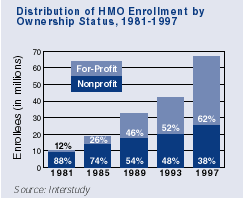

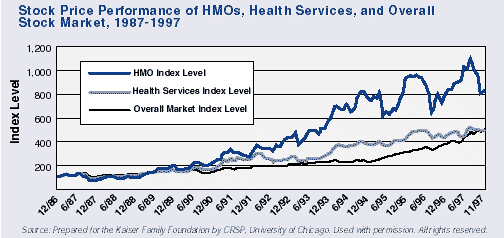
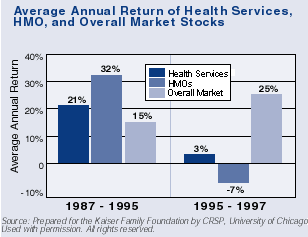



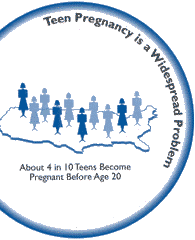 How widespread is teen pregnancy in the U.S.? More than four in 10 young women become pregnant at least once before they reach the age of 20 – nearly one million a year.
How widespread is teen pregnancy in the U.S.? More than four in 10 young women become pregnant at least once before they reach the age of 20 – nearly one million a year. 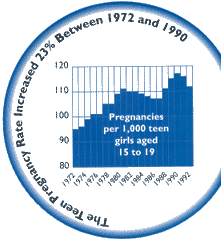 Are more teens getting pregnant today than two or three decades ago? The pregnancy rate among all teen girls aged 15-19 rose 23 percent between 1972 and 1990, and then fell slightly in 1992. This increase occurred because of a rise in the proportion of teenagers who have had sexual intercourse. During the same time, the pregnancy rate among sexually experienced teen girls decreased 19 percent, largely due to the fact that many more teens use contraception today than did in the past. Most (71%) sexually active teens use contraception.
Are more teens getting pregnant today than two or three decades ago? The pregnancy rate among all teen girls aged 15-19 rose 23 percent between 1972 and 1990, and then fell slightly in 1992. This increase occurred because of a rise in the proportion of teenagers who have had sexual intercourse. During the same time, the pregnancy rate among sexually experienced teen girls decreased 19 percent, largely due to the fact that many more teens use contraception today than did in the past. Most (71%) sexually active teens use contraception.